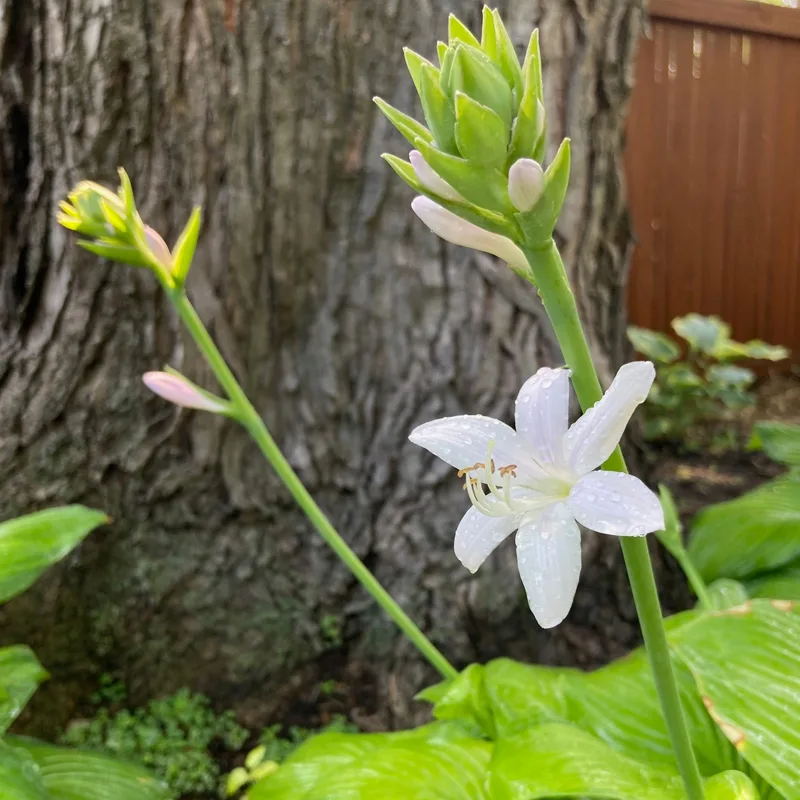
September 18 – Brassica
"Brassica, the ornamental kale, represents September 18."
Brassica symbolizes renewal and prosperity. You bring a refreshing perspective and thrive in growth. Like its lush leaves, you add vibrancy to every setting.
Brassica: A World of Flavor from a Single Genus
My name is Ferb Vu, and I’m fascinated by the world of plants. There’s something incredible about the diversity of life that can spring from a single seed, and few plant genera showcase this better than Brassica. This group of plants, belonging to the mustard family (Brassicaceae), has been a staple in human diets for centuries, and for good reason. Not only are they incredibly versatile in the kitchen, but they also boast a range of health benefits. Join me as we explore the wonderful world of Brassica.
What Makes a Brassica a Brassica?
Brassica plants are typically characterized by their distinctive four-petal flowers, often yellow, which resemble a cross (hence the alternative name, cruciferous vegetables). They are generally cool-season crops, thriving in temperate climates. But what truly sets them apart is their incredible diversity. Through selective breeding over millennia, humans have coaxed a surprising variety of forms from this single genus. Think about it: a head of cabbage, a stalk of broccoli, and a bunch of mustard greens all arise from the same genus. That’s the magic of Brassica!
A Genus of Many Faces: Brassica Species
The Brassica genus encompasses a wide array of species, many of which have become essential to cuisines around the globe. Here are:
- Brassica assyriaca Mouterde
- Brassica aucheri Boiss.
- Brassica baldensis (Prosser & Bertolli) Prosser & Bertolli
- Brassica balearica Pers.
- Brassica barrelieri (L.) Janka
- Brassica beytepeensis Yıld.
- Brassica bourgeaui (Webb ex Christ) Kuntze
- Brassica cadmea Heldr. ex O.E.Schulz
- Brassica cretica Lam.
- Brassica deflexa Boiss.
- Brassica deserti Danin & Hedge
- Brassica desnottesii Emb. & Maire
- Brassica dimorpha Coss. & Durieu
- Brassica elongata Ehrh.
- Brassica fruticulosa Cirillo
- Brassica gravinae Ten.
- Brassica × harmsiana O.E.Schulz
- Brassica hilarionis Post
- Brassica incana Ten.
- Brassica insularis Moris
- Brassica juncea (L.) Czern.
- Brassica loncholoma Pomel
- Brassica macrocarpa Guss.
- Brassica maurorum Durieu
- Brassica montana Pourr.
- Brassica napus L. Plant FAQs: Brassica Napus – Oilseed Rape – Canola
- Brassica nivalis Boiss. & Heldr.
- Brassica oleracea L. Plant FAQs: Brassica Oleracea – Cabbage, Kale, Broccoli
- Brassica oxyrrhina (Coss.) Gomes Mach.
- Brassica procumbens (Poir.) O.E.Schulz
- Brassica rapa L. Plant FAQs: Brassica Rapa
- Brassica repanda (Willd.) DC.
- Brassica rupestris Raf.
- Brassica setulosa (Boiss. & Reut.) Coss.
- Brassica somalensis Hedge & A.G.Mill.
- Brassica souliei (Batt.) Batt.
- Brassica spinescens Pomel
- Brassica taiwanensis S.S.Ying
- Brassica taurica (Tzvelev) Tzvelev
- Brassica trichocarpa C.Brullo, Brullo, Giusso & Ilardi
- Brassica tyrrhena Giotta, Piccitto & Arrigoni
- Brassica villosa Biv.
Why Embrace Brassica
Beyond their culinary versatility, Brassica vegetables offer a wealth of health benefits. They are excellent sources of vitamins, minerals, and fiber. Crucially, they are rich in glucosinolates, compounds that break down into substances with potential cancer-fighting properties. Studies suggest that regular consumption of Brassica vegetables may help reduce the risk of certain cancers, boost the immune system, and improve heart health.
Cooking with Brassica
One of the joys of Brassica vegetables is their adaptability in the kitchen. They can be enjoyed raw in salads, added to stir-fries, roasted to bring out their sweetness, or even fermented into kimchi or sauerkraut. Their flavors range from the mild sweetness of cabbage to the peppery bite of arugula, offering something for every palate.
For me, there’s nothing quite like a simple stir-fry with bok choy and garlic, or a hearty soup with kale and potatoes. And of course, no Sunday roast is complete without a side of roasted Brussels sprouts.
A Genus with a Future
The Brassica genus continues to play a vital role in feeding the world. Researchers are constantly working to improve yields, enhance nutritional content, and develop new varieties with improved disease resistance. As we face the challenges of a growing population and a changing climate, Brassica crops offer a sustainable and nutritious food source for generations to come.
So, the next time you encounter a member of the Brassica family, take a moment to appreciate its versatility and the centuries of human ingenuity that have brought it to your plate. From the humble cabbage to the spicy mustard seed, this genus truly offers a world of flavor and nutrition.
If i die, water my plants!



